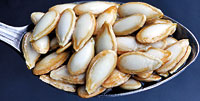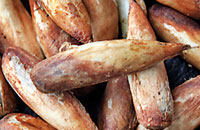The days are rushed. School, office, housework, tuition, there’s hardly any time to cook let alone plan meals.
Think you must what your family will be eating each day, stresses Consultant Medical Nutritionist Dr. Renuka Jayatissa of the Medical Research Institute, otherwise the consequences will be disastrous.
If you and your family don’t eat right, illness will follow. For children, the effects may come much later, she points out, and then it will be too late.
Dr. Jayatissa who has studied not only the food habits of Sri Lankans but also the deficiencies in our diets, gives a basic guide to good nutrition for healthy living.
A family will comprise adults and children in different age groups and with different needs for whom the quantity and quality of nutrition will vary.
Are the children adolescents? Is there an expectant or breastfeeding mother? Is there an elderly person? Are the family members very active or sedentary?
The four key factors which should be taken into account in the type and quantity of meals are – age, gender, physiological status and activity level.
There are five essential “groups” of food that we need to eat each and every day, stresses Dr. Jayatissa ticking them off on the five fingers of her hand.
They are:
- Cereals
- Vegetables
- Fruits
- Milk and milk products
- Protein-rich food
Fat and sugar, according to this nutritionist, are “fringe” foods which can be played around with.
Cereals include rice, rice-flour preparations, bread, wheat-flour preparations, pasta, noodles, yams such as manioc and bathala, jak, breadfruit and corn flakes. They provide the daily energy we need for our activities.
Vegetables and fruit ranging from carrot to beetroot to banana, mango and papaya, are a vital factor in providing the essential micronutrients our bodies need.
Required in minute quantities, these vitamins and minerals are crucial for the body’s cells, brain development, learning capacity, memory, good skin and vision.
Dark green leafy vegetables should be very much a part of the meal and should come cleaned and washed in handy packs of 150gms (three tablespoons for each person in a family of five) along with a separate sachet of 30gms of desiccated coconut to aid the harried housewife, suggests Dr. Jayatissa.
Milk and milk products are important to fill the “calcium gap” most Sri Lankans have in their diets and are essential for bone-building.
A certain amount of protein-rich food such as meat, fish, egg, pulses including lentils (dhal), cowpea and green gram, soya is needed for the muscles and muscle-activity. However, an excess of protein-rich food will have adverse effects due to an overworked liver and kidneys, she says.
The “playthings” of fat and sugar while providing energy should be included in the diet taking into careful consideration the weight of those eating the meal as well as how much activity they engage in.
Explaining that fat will include coconut milk, oil, butter and margarine, Dr. Jayatissa says sugar encompasses not only refined sugar but also sugar added biscuits, cordials, carbonated (fizzy) drinks, toffees and chocolates et al.
How many meals (frequency) should a person have per day? Three, she says, which will be breakfast, lunch and dinner. However, small children, pregnant and lactating mothers and people with special needs should have five meals.
What of the quantity? It will depend on the earlier mentioned four key factors.
Taking each meal, Dr. Jayatissa says that breakfast is a must as it not only keeps us active but improves learning capacity and attention span.
Pointing out that just a glass of milk is not adequate for breakfast, she stresses that at least three food groups should be part of each meal.
A “complete” meal must necessarily have at least three of the five food groups, to fulfil our daily needs to maintain a healthy life.
Here are a few simple suggestions:
Breakfast – Cornflakes+ yoghurt+ a fruit
Kola kenda made with rice+a fruit
A slice of bread+lentils+a fruit
Milk rice+fish+a fruit
Lunch – Rice+2 kinds of vegetables+green leaves+fish
Rice+2 kinds vegetables+green leaves+lentils
Dinner – A rice-flour preparation (string-hoppers)+ a fish or meat curry+pol sambol+a vegetable soup with vegetables
Pittu+a fish or meat curry+a fruit
If there are only two food groups a third can be added in the form of a soup, a fruit, curd or yoghurt.
Think about the food you eat and whether it is healthy and balanced because the silent deficiencies will create a host of problems.
Go nutty
 |
| Pumpkin seeds |
 |
| Kottang |
Nuts should be part of the daily diet because they contain “good fat” or unsaturated fat.
Sesame, peanuts, cashew etc may be consumed, but, warns Dr. Jayatissa, you should not eat it salted or with sugar.
The daily intake of plain nuts should be just one tablespoon, for anything more will be converted to cholesterol.
Have you ever tried pumpkin seeds or our very own almonds which come in the form of kottang, she asks, requesting entrepreneurs to take to this industry and packet a tablespoonful for easy consumption.
Then children can be encouraged to munch them while watching TV without resorting to junk food.
Kottang which is a good source of monosaturated fat is now the food of bats which is an utter waste, she says.
Tips on healthy eating
nAvoid tea soon after a main meal because it obstructs the absorption of iron to the body. Tea should be drunk only about two hours after a main meal.
nAs rice has phytate which reduces the absorption of micronutrients (vitamins and minerals) to the body from other food, a small quantity of animal protein or Vitamin C-rich food such as fruits will do the trick and help absorb iron and zinc. Zinc helps to protect us from sickness.
nWater is a vital part of the diet and about 1.5-2 litres are a must which could be taken throughout the day. One and a half glasses of water with every meal will bring in the quota you need.
It is better to drink water rather than sugary drinks, suggests Dr. Jayatissa, as such drinks aggravate other health problems and also cause weight-gain.
How much should we eat?
- Two portions of fruit and three portions of vegetables (including a dark green leafy variety). Among the vegetables should be a yellow item because it prevents disease and also has anti-cancer properties. Variety will not only add spice to your life but will make you more healthy, says Dr. Jayatissa, giving the intake in simple measurements. A person should have at least six tablespoons of vegetables a day in addition to ½ a cup of green leaves (altogether 400gms of fruit and vegetables).
- The rice quantity would vary depending on what type of work a person did. If a person is very active, like a farmer, then the amount could be more than a less-active office worker. A sedentary man should eat only two cups of rice for lunch and a woman 1 1/2, for excess energy is deposited as fat tissue and weight gain is inevitable.
- If string hoppers are on the dinner menu, a sedentary man should take only about eight or nine and a woman five.
- The rule of thumb for this rice-eating nation should be to move away from a plate with 90% rice and 10% vegetables to 2/3rd of rice and the balance vegetables and a protein-rich food.
|
